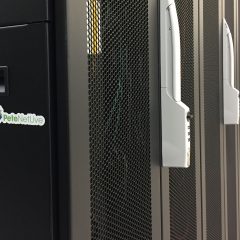How to Tell if Windows is 32 or 64 bit
KB ID 0000153 Problem If you want to know what version (x64 or x86) of Windows you are running, then this is the simplest way to find out. Solution Under accessories run system information; Under System Type: If it says x86 then it’s 32 bit. However if it says x64 then it’s 64 bit. Windows XP and Server 2003 1. Click Start > Run > sysdm.cpl {enter} > General Tab. Windows XP x32 (x86) and Windows XP x64 Windows...
Event ID 2937
KB ID 0000448 Problem Event ID 2937 Process edgetransport.exe () (PID=6156). Object [CN={mailbox database name},CN=Databases,CN=Exchange Administrative Group (FYDIBOHF23SPDLT),CN=Administrative Groups,CN={domain},CN=Microsoft Exchange,CN=Services,CN=Configuration,DC={domain},DC=com]. Property [PublicFolderDatabase] is set to value [{domain}.org/Configuration/Deleted Objects/Public Folder Store (EXCH2K3)...
Windows Server – Migrating DHCP Scopes
KB ID 0000447 Problem Normally you can just create a new scope on your new DHCP server, but if you have a lot of reservations that you don’t want to have to recreate (for printers network devices etc), then it’s a better option to migrate/copy the scope to the new server. Solution 1. Copy all the DHCP settings to a text file with the following command; netsh dhcp server export C:\dhcp.txt all 2. Stop and disable the DHCP...
Windows – Create ‘Multiple Version’ Install Media(x32 and x64 bit)
KB ID 0000164 Problem When Microsoft released Windows Vista and Server 2008 they had the brilliant Idea of putting all the versions you would require in the same install media. With Windows 7 they have changed their approach, and the install media is specific to the version that is going to be installed. Well actually that’s not true the version is decided by a file in the installation media called ei.cfg and all versions are...
Installing Windows From USB
KB ID 0000191 Problem This weekend I needed to install Windows 7 on my shiny new Acer HTPC, but having no internal CD/DVD drive I needed to do this via USB. Quite a few times now I’ve needed to install Windows (Particularly Server 2008), on a machine that has no DVD Drive. You can now install both products from a bootable USB drive by doing either of the the following. Note: You will need a USB Drive with enough free space on it...




